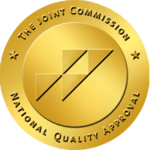While completion of a treatment and detoxification program is a positive first step, sobriety is something that has to be continuously monitored in recovery. Since addiction stems from a complex web of social, psychological, genetic, and environmental factors, recovery is subject to the same difficulties.
Sober living helps to minimize, if not erase, some of those difficulties by providing a safe living environment, where recovery and sobriety are paramount. Social and environmental temptations are controlled through strict rules, like curfew, visitor restrictions, and a healthy home life. Psychological factors are worked on through regular therapy, a positive environment, group therapy, peer support, and twelve-step meetings.
Sober living is one of the best steps to take after treatment because they do everything in their power to help recovering addicts. They provide a home life that is calm, orderly, and free from previous stressors that may have exacerbated substance abuse. Staff members work around the clock to provide support. They also make sure that residents abide by house rules.
The Rising Need of Sober Living Homes
Drug and alcohol addiction is a growing epidemic and a public health threat in the country today. Opiate addiction has risen to alarming rates due to the relatively easy access of legal prescription drugs. According to the American Society of Addiction Medicine, “of the 20.5 million Americans 12 or older that had a substance use disorder in 2015, 2 million had a substance use disorder involving prescription pain relievers.” There is also a rising occurrence in opioid overdoses. Reports state that, “drug overdose is the leading cause of accidental death in the U.S., with 55,403 lethal drug overdoses in 2015.”
The need for sustainable treatment and recovery programs is crucial for the wellness of today’s society. And while excellent strides are being made through in-patient treatment programs, detox, and rehabilitation, the journey does not stop there. Addiction is a chronic brain disease, which affects control, decision-making, and functioning. The inclination to return to substance abuse may arise at any time. But there are steps to take to decrease these challenges.
Primary treatment programs, along with detoxification, can occur as quickly as thirty days or extend to as long as a few months. It varies by program and the client’s needs. However, recovery presents a whole new set of challenges in remaining sober and fighting any residual addiction urges.
Sober living can help tremendously in this area. They have incredibly positive success rates. With the number of homes increasing across the country, they provide numerous offerings to aide recovering addicts in their sobriety. Reports note that people who chose to stay for an extended period have better rates of sobriety, “at the end of the 12-month period, 87 percent of the residents were still drug free.”
Sober living homes provide crucial elements for healing. They offer stability through a tranquil and routine living experience. Staff and other recovering peers set the tone for the house, providing round the clock care. This is important because personal factors and stress are huge issues in triggering relapse, so residential facilities try to minimize those factors.
Frequent drug testing, attendance at twelve-step meetings, and strict house rules keeps residents focused on their recovery. As they transition to an independent life, residents will accept and learn how to live a clean and sober life through guidelines offered in sober living.
Sober Living Provides Alternative Activities
While regular therapy, group meetings, and twelve-step programs are all central components to therapy, addiction also needs to be replaced. In sober living, residents will have multiple offerings to learn more about healthier activities that can manage stress to replace what addiction once provided. Healthy outlets like meditation, mindfulness training, acupuncture treatment, cooking, yoga, or eco-therapy help guide the path towards clean and sober living.
Eco-Therapy and Sober Living
Sober living encourages house camaraderie and engagement, because peer support is a valuable part of the recovery process. It is also one of the defining factors of sober living. House staff often encourages outdoor activities and excursions, and eco-therapy combines group interaction and wellness.
Spending time outdoors is one of the more underestimated activities that can promote healing. For those recovering from the effects of addiction and trauma, eco-therapy provides serene comfort. And alongside the rigorous work of therapy, the peace of the outdoors is often a welcome change for residents.
Eco-therapy is a form of self-care. It can increase spirituality, focus, and perspective. Fresh air and sunlight are mood boosters, which can even improve symptoms of depression and seasonal affective disorder (SAD). Studies show that outdoor, “programs have been found to decrease relapse rates in substance addicts. Such findings generally have more to do with mood and behavior than basic biology—but mood and behavior are intimately tied to physical well-being. Social connection, for instance, is one of the most important factors in human health. And communal green spaces foster that.”
Addiction is often coupled with co-occurring disorders, like depression. And as people turn towards substances to deal with pain, they continue to retreat further away from physical health. Eco-therapy activities restore health through Vitamin D and stress relief from nature. As a result, sober living facilities encourage this wellness pursuit for treating addiction. Eco-therapy is a vital outlet for relief and restoration.
Sober Living and Aftercare
Sober living is an integrated aftercare program that continues the work of treatment in a holistic way. Individual and group psychotherapy, boundaries, goal setting, and mentorship are all elements that are found in sober living, which cannot be found living alone. The guidance found in sober living is needed in the weeks and month after treatment completion. Chemical dependency is a serious condition that can be difficult to navigate alone and it doesn’t have to be. The recovering individual needs to find activities that they can join, even after sober living has ended.

Dr. Deena is the Chief Clinical Officer of Westwind Recovery®, an award-winning outpatient treatment center in Los Angeles where she oversees the clinical and administrative program and treatment methods. Dr. Deena is a doctor of psychology and licensed clinical social worker since 1993. LCSW #20628. Originally from the East Coast, Dr. Deena has worked running treatment centers, worked as a therapist in psychiatric hospitals as well as school settings and currently has a thriving private practice in the LA area. Dr. Deena has appeared regularly on the Dr. Phil Show as an expert since 2003. She has also been featured on many other TV shows, podcasts and has contributed to written publications as well as podcasts.



